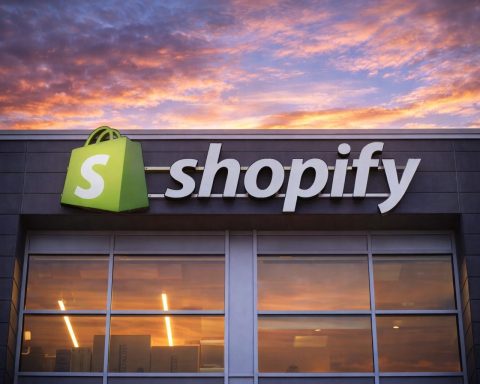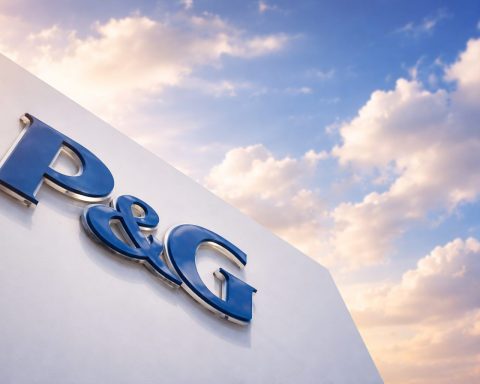Ashok Leyland Ltd (NSE: ASHOKLEY, BSE: 500477) spent Friday, 28 November 2025, consolidating just below record levels after a sharp rally, as the market digested a clarification on its finance arm’s proposed merger and stayed optimistic about a prolonged commercial vehicle (CV) upcycle.
The stock remained one of the most actively traded names on the street and stayed close to a five‑year swing high, keeping it firmly on the radar of short‑term traders and long‑term investors alike. [1]
Ashok Leyland share price today: mild dip after a big week
On Friday, 28 November 2025, Ashok Leyland closed around ₹158.85 on the NSE, down roughly 0.6% from Thursday’s close of ₹159.75. During the session, the stock traded between ₹156.33 and ₹160.12, with opening trades near ₹158.00 and volume at about 15.9 million shares, indicating another heavy‑activity day for the counter. [2]
Intraday data from the Economic Times around 11:00 AM IST showed the stock at about ₹158.75, down roughly 0.6% at that time, with market capitalisation near ₹93,000 crore and a volume‑weighted average price (VWAP) close to ₹158.5. [3]
For context:
- 1‑week return: up about 9–10%
- 1‑month return: up roughly 13%
- 6‑month return: up around 33%
- 1‑year return: up about 37%
- 52‑week range: roughly ₹95.9 (low) to ₹162.0 (high) [4]
In other words, Friday’s small decline looks more like a pause after a strong run than a trend reversal.
Heavy trading and 5‑year swing high keep the stock in focus
Ashok Leyland has been drawing unusually strong participation from traders over the last few sessions:
- A MarketsMojo report as of 10:43 AM on 28 November highlighted elevated trading volumes and high turnover, flagging the stock as one of the major movers by both volume and value, with turnover above ₹150 crore and intraday range roughly matching the NSE data. [5]
- Technical scans published by ETMarkets on Friday tagged Ashok Leyland among five Nifty 500 stocks that hit a 5‑year swing high at Thursday’s close (27 November), underscoring strong bullish momentum on the charts. [6]
The immediate trigger for this technical breakout came on Thursday, 27 November, when NDTV Profit reported that Ashok Leyland shares surged about 6.4% after channel checks by B&K Securities pointed to a robust CV upcycle:
- November wholesale volumes are estimated at 12,000–13,000 units.
- Vendors and dealers reportedly see strong schedules through March 2026.
- Analysts quoted in the report expect the current CV cycle to potentially surpass the FY19 peak by FY27 and stay strong into FY28. [7]
This combination of strong price action, high volume, and positive cycle commentary is exactly the kind of setup that draws both momentum traders and long‑only funds.
Merger headlines explained: HLFL–NDL clarification calms confusion
One of the key news events on 28 November 2025 was Ashok Leyland’s clarification around media coverage of a proposed merger involving its finance arm, Hinduja Leyland Finance Ltd (HLFL).
An Angel One market update summarised the situation as follows: [8]
- What actually happened:
- On 25 November 2025, HLFL’s own board approved a proposal for a merger by absorption into NDL Ventures Ltd, subject to regulatory and statutory approvals.
- HLFL, being a material subsidiary, informed the stock exchanges directly.
- Under SEBI Listing Regulation 30(9), Ashok Leyland, as the listed parent, then forwarded HLFL’s intimation to the exchanges on 26 November 2025.
- What went wrong in the news flow:
- Some media reports misinterpreted these disclosures as Ashok Leyland’s own board approving a merger of the company itself with NDL, rather than HLFL’s board decision regarding HLFL.
- The clarification on 28 November:
- Ashok Leyland publicly clarified that the decision pertains to HLFL’s board, not its own.
- It emphasised that it had simply complied with disclosure norms for a material subsidiary and that investors should rely on official filings rather than early misinterpretations.
- The clarification also stressed the company’s commitment to regulatory transparency.
Importantly, nothing in the clarification changes Ashok Leyland’s core commercial vehicle business; the proposed transaction relates to its finance arm. The market reaction on Friday — modest cooling rather than panic — suggests investors are treating the episode more as a disclosure clean‑up than a structural red flag.
Fundamental backdrop: record profits and a strengthening CV cycle
Beyond one‑day price moves, Ashok Leyland’s recent fundamental performance helps explain why the stock is back near multi‑year highs.
Q2 FY26: record profit but mixed optics
Different sources slice the latest quarterly numbers slightly differently, but the broad picture is consistent:
- An official company release (summarised in media) said Q2 FY26 profit before tax (PBT) rose about 23% to roughly ₹1,083 crore, with profit after tax (PAT) hitting an all‑time high near ₹771 crore and EBITDA margin around 12.1%. The board also announced a 100% interim dividend of ₹1 per share. [9]
- Mint’s coverage of the results highlighted that standalone revenue from operations grew about 9% year‑on‑year to roughly ₹9,588 crore, while reported net profit of around ₹771 crore was essentially flat versus the prior year, largely due to one‑off items. [10]
- A Reuters note framed it as “flat quarterly profit as costs weigh”, focusing on margin pressure from higher input and operating costs even as volumes improved. [11]
On the consolidated side, a TrucksBuses analysis put Q2 FY26 net profit at a record ₹820 crore, up about 7% year‑on‑year, with consolidated revenue near ₹12,577 crore, and highlighted that losses at Switch Mobility (the EV arm) narrowed after a restructuring of UK operations. [12]
The key takeaway:
- At the standalone level, profit looks flat to mildly up.
- At the consolidated level, profit is at a record high, helped by lower losses in the EV subsidiary and healthy CV demand.
Strong order book and bus dominance
The bus and institutional order pipeline has also been supportive:
- In October 2025, Ashok Leyland secured a ₹668.76 crore order for 1,937 buses from Tamil Nadu State Transport Undertakings (TNSTU), covering a mix of BS‑VI diesel chassis and fully built buses, with deliveries stretching from late 2025 through early 2027. [13]
- Earlier, in June 2025, the company won an order worth about ₹184 crore (₹183.8 crore in another corporate filing) for 543 BS‑VI diesel chassis and fully built buses from Tamil Nadu State Transport Corporation, to be executed between June and December 2025. [14]
These orders reinforce Ashok Leyland’s leadership in the domestic bus market, a segment that has seen a strong multi‑quarter recovery post‑pandemic.
Industry commentary: demand still firm
At the sector level, management commentary and industry reports suggest the CV cycle still has room to run:
- CEO Shenu Agarwal has recently indicated that medium & heavy commercial vehicle (M&HCV) demand grew in high single digits in October, with the company’s addressable light CV segment growing even faster, and expects continued high‑single‑digit growth in H2. [15]
- NDTV Profit’s channel‑check story, which helped trigger Thursday’s rally, argued that once an M&HCV up‑cycle starts, it typically runs at least two years, and that the current cycle may set new records in FY27 and FY28. [16]
Layered on top of broader data — Nifty 50, Nifty Bank and the Auto index all recently touched all‑time highs — Ashok Leyland is essentially riding a sector‑wide risk‑on wave. [17]
Valuation snapshot: how expensive is Ashok Leyland now?
With the stock near record levels, valuation is a key question.
Data from the Economic Times’ stock page on 28 November 2025 show roughly: [18]
- Market cap: ~₹93,000 crore
- Trailing P/E: ~28–29×
- Price‑to‑book: about 3×
- Dividend yield: close to 4%
- 52‑week high / low:₹162 / ₹95.9
Analyst sentiment remains broadly constructive:
- ET lists 36 analysts covering the stock, with the majority in the “Buy” or “Strong Buy” camp and only a small minority recommending “Sell”.
- Recent brokerage targets cited include ₹245–₹250 from large brokerages such as ICICI Securities and Axis Securities, implying meaningful upside from current levels if their medium‑term assumptions on the CV cycle and margins play out. [19]
At the same time, an ETPrime analysis on 28 November compared valuations across commercial vehicle players and pointed out that Tata Motors, despite higher revenues, does not enjoy a clear valuation premium over Ashok Leyland, underscoring how strongly the market already prices in Leyland’s bus and CV franchise. [20]
For investors, that means execution and cycle durability now matter more than “cheapness”: the stock is no longer in the bargain bin, but rather being priced as a quality, leveraged‑to‑cycle play.
Short‑term trading interest: “stocks to buy today” lists and technical buzz
With momentum this strong, it’s not surprising that Ashok Leyland is popping up on short‑term trading radars:
- ET Now’s “Stocks to Buy Today” list for Friday, 28 November highlighted Ashok Leyland among key short‑term picks, alongside names like IRFC, SBI, BEL and Jio Financial Services, based on technical setups and ongoing strength in broader indices. [21]
- Technical tools on multiple platforms are flashing bullish signals. ET notes that a daily MACD bullish crossover appeared recently, with historical data suggesting average gains within ten days of such signals in this stock, though past performance is no guarantee of future returns. [22]
On the flip side, valuation and the magnitude of the recent rally mean pullbacks like Friday’s 0.5–0.7% dip are entirely normal, especially after a near‑vertical move the previous day.
What to watch in Ashok Leyland after 28 November 2025
Putting the day’s action and news together, here are the key variables investors and traders will likely track from here:
- Commercial vehicle demand through FY26–FY28
The core bull case rests on the CV upcycle: if volumes do climb past the FY19 peak by FY27, as some analysts expect, earnings could compound strongly. Any sign of demand slowing — especially in trucks and buses — would be a red flag. [23] - HLFL–NDL merger path and structure
While today’s clarification reduced confusion, the proposed merger of Hinduja Leyland Finance with NDL Ventures still needs regulatory approvals and formal documentation. The final structure will determine what, if any, value leakage or unlocking occurs for Ashok Leyland shareholders. - Margins and EV transition
Record profits have been helped by lower losses at Switch Mobility and strong pricing in premium CV segments. Sustaining double‑digit EBITDA margins while investing heavily in electric, CNG, LNG and hydrogen platforms will be a delicate balancing act. [24] - Order flows from state transport undertakings and infrastructure‑linked demand
Large bus orders from state transport undertakings, along with infra‑led truck demand, have underpinned volumes. Any slowdown in government capex, urban mobility spending, or bus fleet renewal could affect the medium‑term growth trajectory. [25] - Valuation versus peers
As valuations converge across CV makers, relative positioning versus Tata Motors and other players will remain a live debate. ETPrime’s comparison of the “valuation race” between the two suggests the market is already assigning Ashok Leyland a significant quality badge — but also less margin for error. [26]
Bottom line
On 28 November 2025, Ashok Leyland’s share price action was quietly constructive: a small dip after a big rally, near five‑year and 52‑week highs, with heavy trading interest, strong underlying fundamentals and a clarification that tidied up merger‑related confusion.
The stock is no longer a neglected turnaround story; it is being treated as a core proxy on India’s commercial vehicle cycle. Whether current levels prove to be a springboard to the next leg up or a consolidation zone before a pause will depend on how the CV upcycle, HLFL–NDL merger process, and margins unfold over the next few quarters.
References
1. m.economictimes.com, 2. www.investing.com, 3. economictimes.indiatimes.com, 4. economictimes.indiatimes.com, 5. www.marketsmojo.com, 6. m.economictimes.com, 7. www.ndtvprofit.com, 8. www.angelone.in, 9. www.ashokleyland.com, 10. www.livemint.com, 11. www.reuters.com, 12. www.trucksbuses.com, 13. elitewealth.in, 14. www.capitalmarket.com, 15. timesofindia.indiatimes.com, 16. www.ndtvprofit.com, 17. www.ndtvprofit.com, 18. economictimes.indiatimes.com, 19. economictimes.indiatimes.com, 20. m.economictimes.com, 21. www.etnownews.com, 22. economictimes.indiatimes.com, 23. www.ndtvprofit.com, 24. www.trucksbuses.com, 25. elitewealth.in, 26. m.economictimes.com







